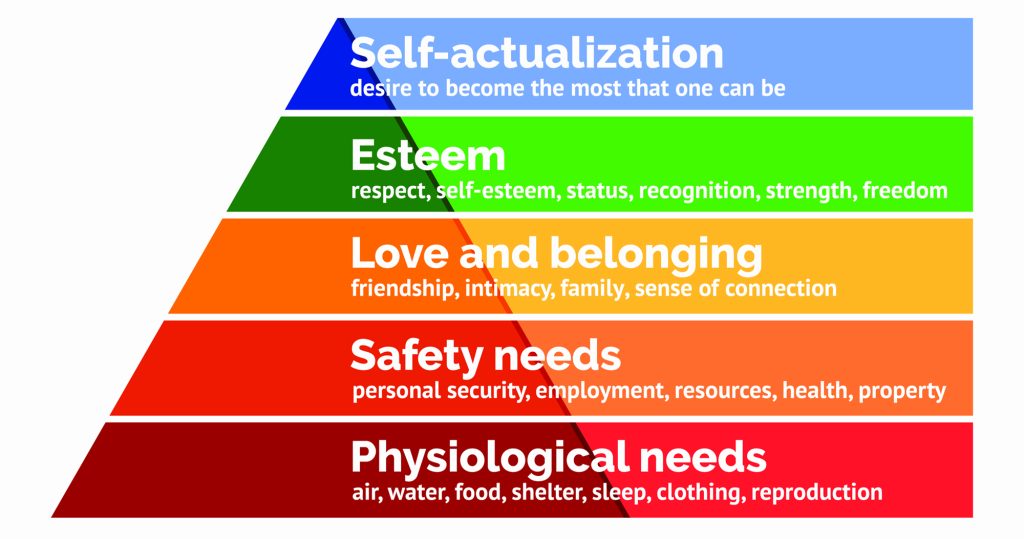Guiding Principles
The following sections outline four principles that have the potential to guide existing systems toward sustainability in the face of climate change and ecosystem disruption. Each of these principles offers a theoretical underpinning to the exploration of our current systems and where we could go to transition to rural sustainability as presented in later sections of the chapter.
Adaptive Capacity
The concept of adaptive capacity has been commonplace in research surrounding climate change, specifically in reference to the balance between mitigation and adaptation, but has often been overlooked in vulnerability and resilience frameworks.15 Adaptive capacity, and tools by which to measure the adaptiveness of a system to climate change threats, can serve to advance theory and application in the field of sustainability and inform policy-makers and planners to develop community-level preparatory measures. While mitigation focuses on the active reduction of the threat of climate change at an individual or systems level, adaptive capacity is more narrowly focused on ‘the ability of a system to adjust to climate […], to moderate potential damages, to take advantage of opportunities, or to cope with the consequences’.15-21 Or, more simplistically: the ability of a system to prepare for stresses in advance or adjust and respond to the effects caused by stress.15
The adaptive capacity of a system (or community) is fundamentally dependent on resources and the ability of the system to mobilize these resources effectively.17 The resources required for adaptive capacity include human, economic, social, institutional, and natural resources that can be mobilized at different scales including individual, community, regional, and national. Individual actors influence the resilience of a given system by facilitating interactions between its human and environmental components, ultimately building capacity. Rural physician leadership has a lot of unrealized potential to contribute to the adaptive capacity of communities and systems, and organizations like the Society of Rural Physicians of Canada and the Rural Coordination Centre of British Columbia have the opportunity to build this resource. The more adaptive capacity within a system, the greater the likelihood that the system will be resilient in the face of climate stressors and emergencies.15
There are significant challenges with accurately measuring the adaptive capacity of a system or community, particularly using methods that gauge the effects of past climate stressors as a predictor of the aptitude against future threats. Due to their latent nature, climate change events are difficult to gauge and to measure until after their realization or mobilization within a system.15 Similarly, basing adaptive capacity on previous climate stressors runs the risk of inaccurate estimations due to the possibility that future stressors may far exceed what the system has experienced in the past, and it is more likely that changes will occur gradually and outstrip the boundaries of the previous events.15
The theory of adaptive capacity is important in reference to explorations of sustainability, particularly in systems that are increasingly vulnerable to climate shocks. The rural capacity to not only be resilient to these anthropogenic events, but to also proactively develop sustainable systems that are conducive to our new climate normal is becoming increasingly important. Priority should be placed on bolstering self-sustaining and resilient food, agriculture, water, and natural resources processes in order to reduce dependency and vulnerability. The theory of adaptive capacity helps to actualize these supports by recognizing the importance of various levels of processes from decision making and governance, to the structure of institutions and the fostering of innovation.18
Alex Bland discusses the concept of adaptive capacity and how it relates to climate change resilience (1:26)
Seventh Generation Principle

The Seventh Generation Principle takes its name from the Great Law of the Haudenosaunee, a founding document of the Iroquois Confederacy of 1722, an alliance between six Native American nations in what is now upper New York state and southeastern Canada. The philosophy states that the decisions we make today should result in a sustainable world seven generations into the future.20 Other iterations of the philosophy consider the links between an individual and their parents, grandparents, and great-grandparents, as well as the three generations succeeding them, with the idea being that we may spend time in each of these positions and that our choices, behaviours, and mistakes resonate that far throughout history.21 By making decisions and understanding the impact of our actions within these seven generations is to respect what has come before us and what is yet to come.
Today, the Seven Generation Principle is largely referred to in reference to decisions being made about energy, water, and natural resources. This custodial world view, as looking after our natural resources rather than owning and exploiting them, is a key philosophy in understanding sustainable practice. Systems incorporating the idea of seven generations have been emerging globally. For example, cities in Japan have borrowed from the Haudenosaunee principle to make urban planning decisions, imagining themselves in the year 2060 in order to advocate for more transformative plans and sustainability initiatives.22 Furthermore, Amsterdam has also devised a plan to have a fully circular city by 2050, meaning that the value of raw materials is retained as much as possible by being used and reused to avoid waste.23 These examples show the applicability of Indigenous teachings to support sustainability and forward-looking policy making.
Respect the land as if it is borrowed from our children and return it to them better than we found it
Maslow’s Hierarchy of Needs
American psychologist Abraham Maslow, in his widely accepted work The Theory of Human Motivation, outlines a theory that behind every action is an intrinsic desire to be satisfied. He categorized the needs and put them within a series of five levels of preference, known as Maslow’s hierarchy of needs. The five levels are as follows 27:
- Physiological
- Meeting the basic needs allowing the human body to function and to sustain life (air, water, food, shelter, sleep, reproduction, clothing)
- Safety
- Having personal security, health, well-being, financial resources, and social supports
- Love and Belonging
- Belonging to and being accepted by a social group, family, intimate partner, or friend that provides a sense of connection
- Esteem
- Exists on two levels (1) self-esteem and self-respect garnered from achievements ones goals and, (2) status and recognition from being held in high esteem by others
- Self-Actualization
- The desire to become the most that one can be, realization of full potential, a subjective need

This pyramid structure as shown above is based upon three basic premises in order to support his theory: (1) Every human strives to to fulfil these needs, (2) Not every level needs to be completely fulfilled before moving onto the next, (3) The process of moving between levels is not linear, there may be transition upwards and backwards.25
Maslow’s theory, while inherently focused on individual need, can be helpful in exploring the impact of climate change and the sustainability of systems to adapt to the challenges posed by ecosystem disruption. Communities in close proximity to the land, specifically rural, remote, and Indigenous populations, may be immediately affected by the changing climate at the physiological level as their basic needs are threatened (i.e. water pollution, food insecurity, deforestation). As of June 2022, there were 15 drinking water advisories in 13 First Nations communities across BC and 18% of First Nations communities in Canada are on a boil water advisory.26 These immediate concerns over communities ability to meet their basic needs is a manifestation of unsustainable industry practice contributing to significant water contamination.
These threats to health and wellness also transcends Maslow’s second tier of safety. Air pollution, water contamination, fracking, and financial stressors propagated by climate events are all examples of threats to safety and wellbeing that may not be classified as an immediate physiological hazard. Destabilization of rural and remote economies caused by natural disasters or prolonged climate instability of key industries can lead to widespread unsustainability.27 A 2021 study found that the amount and proximity of natural gas wells to the homes of 85 pregnant women in the Peace River region of BC was associated with higher levels of certain chemicals utilized in the fracking process compared to the general Canadian population.28 Pregnant women were specifically selected because of the potential negative health impacts from chemical emissions such as preterm birth, low birth weight, and heart malformations.
As we move up the pyramid, climate change can indirectly have a significant impact on the need for love and belonging. Climate anxiety and ideological polarization caused by climate policy and action can have a negative impact on social cohesion and sense of belonging.27 However, inversely, like minded activists, scholars and advocates can find connection and kinship in their drive to support climate adaptation and sustainability initiatives within their communities and social groups.
Maslow’s fourth tier, esteem, similarly relates as authors, scientists and academics may find esteem through climate work both on a personal and social level but concerns over lack of control over our environment and the negative externalities on our self-esteem may also lead to feelings of powerlessness to change or help the climate crises.
Each of these needs-level assessments culminates into Maslow’s highest need of self-actualization, which may become increasingly challenging due to hardship, threatened basic needs and limited resources.27
The challenges of climate change and ecosystem disruption are present on all levels of Maslow’s hierarchy and pose significant barriers to sustainable systems moving forward. These considerations of the individual and community level impacts are important in the context of rural living as we explore key areas of (un)sustainability in this chapter.
Dr. Stefan Grzybowski discusses how we can apply the theory of Maslow’s Hierarchy of Need to understanding sustainability and climate change (2:35)
Value-Driven Paradigm of (Un)Sustainability
Any society is structured on a set of common values, generally expressive of that society’s leadership, that manifest through individual and institutional action.29 The individuals within a society have the power to restructure these value-systems in response to new and evolving situations and consequently, can influence institutional action. The dominant values that are currently driving our unsustainable systems in relation to our natural environment are greed and exploitation, focusing on the potential of financial gain and growth. Successful implementation of sustainable systems cannot be achieved without a shift in values that are embedded in our current systems. Researchers have identified these current values as a profit and growth oriented economy, with growth seen as desirable, competition being healthy, selective redistribution of public resources as appropriate, and material acquisition being the defining factor of success and happiness.13
These current values promote consumerism to levels that are not sustainable. This perception of the “unlimited frontier”, the notion that there is an unlimited amount of natural resources available for human extraction, must be deconstructed for our tenancy with the environment to be considered long-term.13
Our current behaviours regarding climate change are unsustainable and, as behaviours are driven by values, we need to reassess our priorities. The values that become important when we want to achieve environmental sustainability are respect for nature, deconstructing colonial attitudes through processes of truth and reconciliation, and protecting the well-being of future generations. Individual value shifts that lead to collective behaviour change and ultimately, a response from industry, is the logical pathway forward for this transformational change. However, this process can take a very long time, particularly when we are so bought into the current system. International dialogue on climate change in arenas such as Conference of the Parties, national policy action towards sustainable energy production, and individuals mobilizing collective action, such as the youth movement led by Greta Thunberg, are all examples of how these value shifts are manifesting on different system levels. Understanding the values that are driving our individual and institutional action is vital to changing to a sustainable pathway forward.29
Alex Bland discusses the principles that she thinks should guide our approach to climate change sustainability (2:46)

